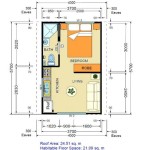Essential Aspects of Site Location Plans
Site Location Plans (SLPs) are vital documents that provide comprehensive information about the location and layout of a proposed development. They are essential for obtaining planning permission and ensuring that the development complies with all relevant regulations. Here are some key aspects of SLPs that you need to know:
1. Purpose of an SLP
The main purpose of an SLP is to provide a detailed visual representation of the proposed development, its surroundings, and the access routes to and from the site. It helps planning authorities assess the impact of the development on the local area and ensure that it meets all the necessary requirements.
2. Key Components of an SLP
An SLP typically includes the following components:
- A map showing the site's location, boundaries, and existing features
- A plan of the proposed development, including buildings, access roads, parking areas, and landscaping
- Information about the surrounding area, such as neighboring properties, roads, and utilities
- A scale bar and north point
- A legend explaining the symbols and abbreviations used on the plan
3. Scale and Accuracy
SLPs must be drawn to an appropriate scale to ensure that they are clear and easy to understand. The scale should be large enough to show all the necessary details but small enough to fit on a single sheet of paper. The accuracy of the SLP is also important, as it will be used to make decisions about the development.
4. Level of Detail
The level of detail required in an SLP will vary depending on the nature of the proposed development. For smaller developments, a simple plan may be sufficient. However, for larger or more complex developments, a more detailed plan will be required.
5. Site Analysis
An SLP should include a site analysis that provides information about the physical characteristics of the site, such as its size, shape, slope, and soil conditions. This information is important for assessing the suitability of the site for the proposed development.
6. Planning Context
The SLP should also include information about the planning context of the site, such as the relevant planning policies and any constraints on development. This information will help planning authorities assess the acceptability of the proposed development in relation to the local planning framework.
7. Submission Requirements
The submission requirements for SLPs vary depending on the local planning authority. It is important to check the specific requirements before submitting an SLP. In most cases, SLPs will need to be submitted in electronic format.
8. Conclusion
SLPs are an essential part of the planning process. They provide planning authorities with the information they need to make informed decisions about proposed developments. By following these essential aspects, you can ensure that your SLP is clear, accurate, and informative.

Creating A Location Plan Guide To Get You Started

Creating A Location Plan Guide To Get You Started

Page 11 City Plans Vectors Ilrations For Free

House Location Exterior Of A Site Plan Image Visual Dictionary

Project Location Plans In Jpg Cad Free 4 43 Mb Bibliocad

3d Cityplanner The Future Of Urban Development

Land 10 What S New Blog Twonav

Welcome To Safetymap Com Building Evacuation Maps Plans Emergency Signs Architectural Planning And Design Safety Training Osha Compliance Risk Assessment

Bennachie Holiday Pods Will Offer A Well Earned Rest For Trekkers

Parish Faversham Town Council Use For Their Neighbourhood Plan And More








